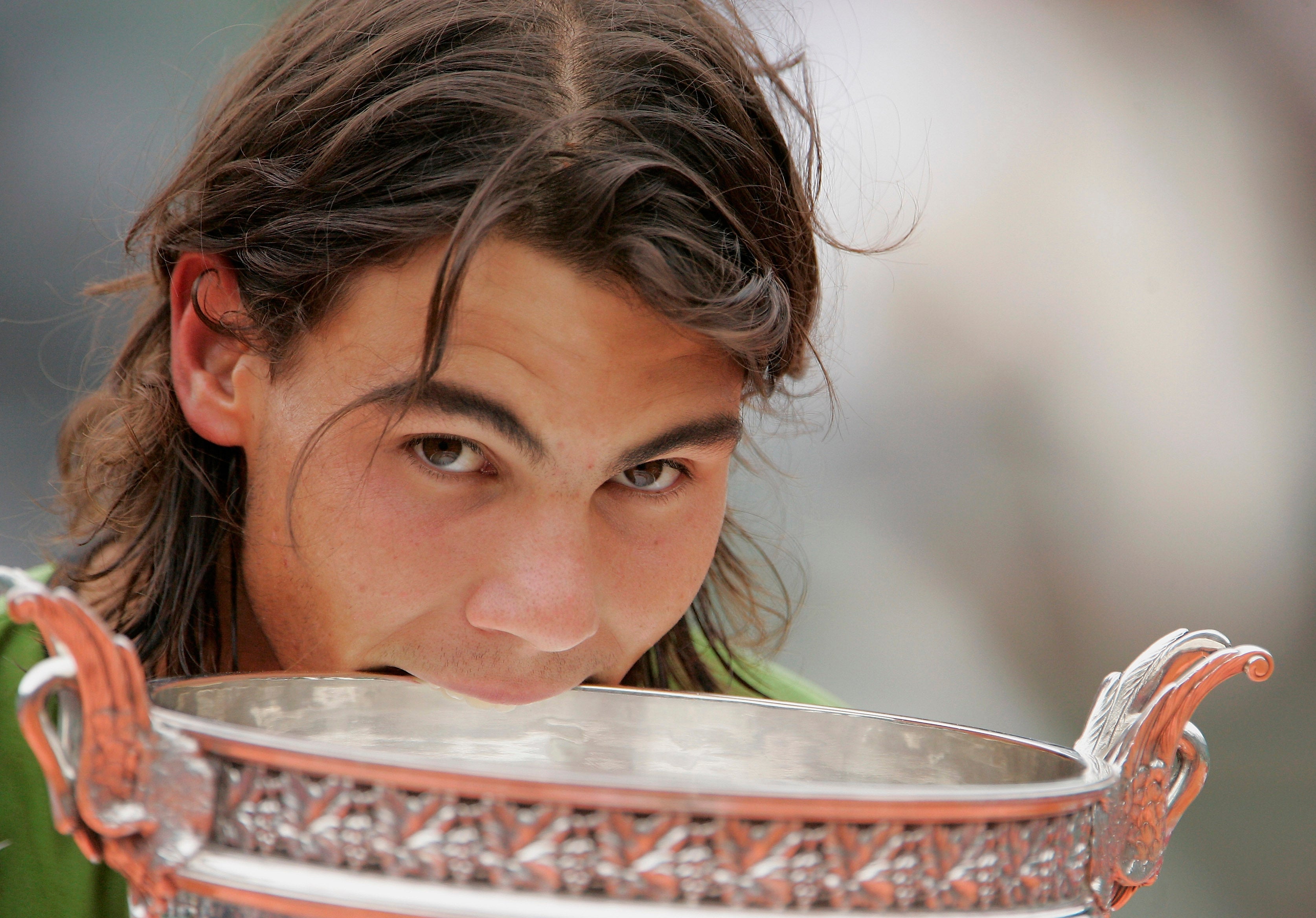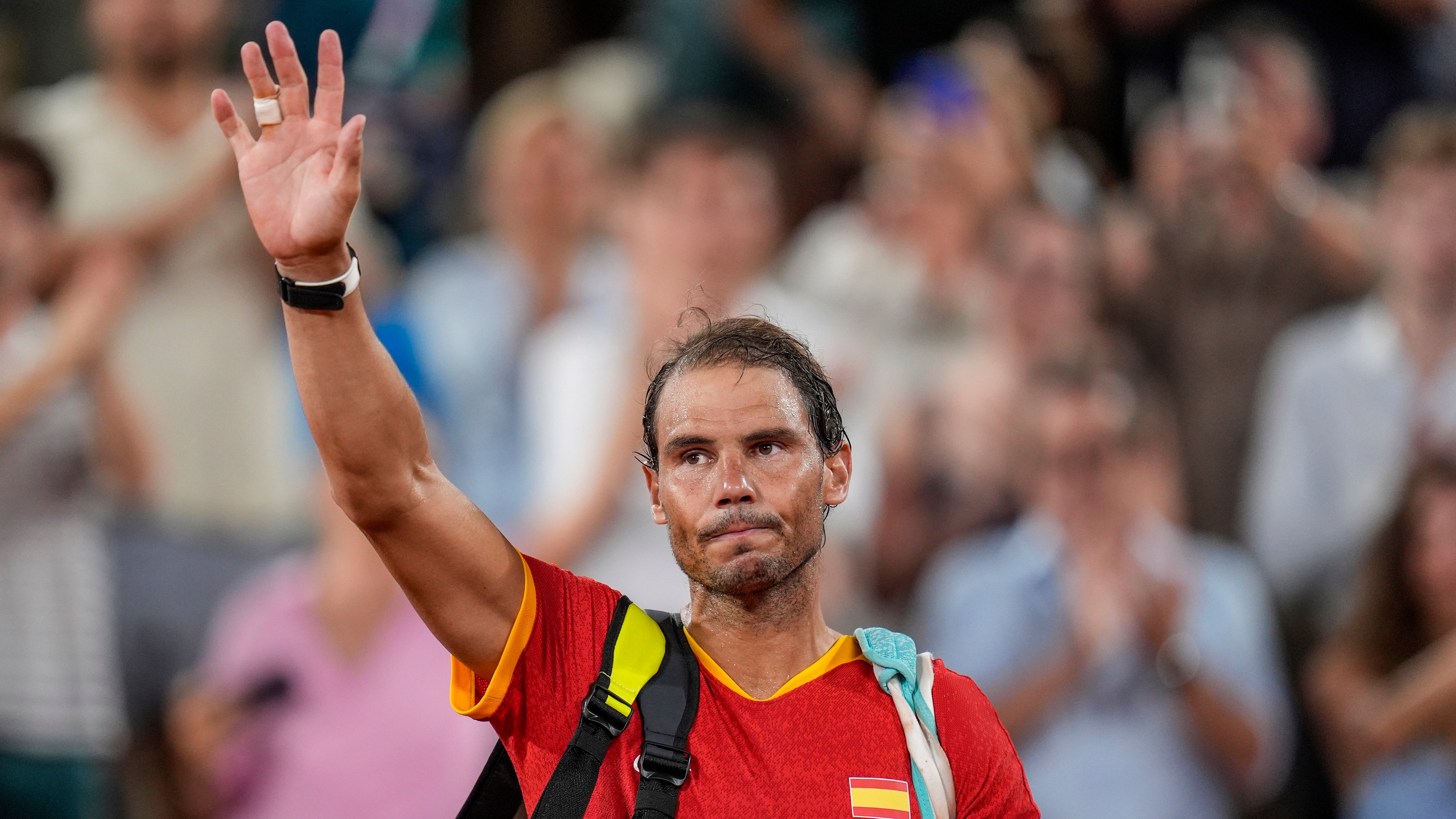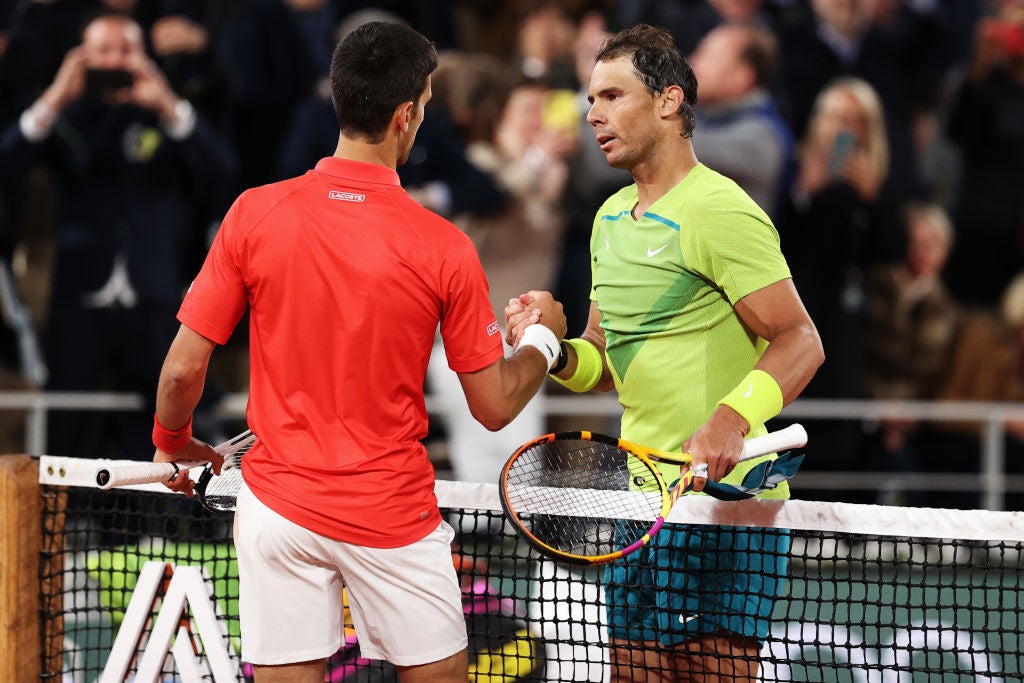Few athletes receive the honour of having a statue built for them at the end of their careers. Even fewer see their achievements recognised while they are still playing. Yet at Roland Garros, a 10ft steel sculpture of Rafael Nadal has stood at its gates since 2021, the great Spaniard locked in a position of typical intensity as he launches himself into a ferocious forehand. Nadal’s statue stands alongside the “Four Musketeers” of French tennis, Jean Borotra, Jacques Brugnon, Henri Cochet and Rene Lacoste, the men who, between them, swept Roland Garros between 1924 and 1932. As a result, the trophy awarded to the men’s singles champion at the French Open is called the Coupe des Mousquetaires.
It is the Spaniard, though, who will leave behind an even greater impact at Roland Garros, with Nadal lifting the Coupe des Mousquetaires a record 14 times. Since first arriving in Paris, the kid from Mallorca in his baggy shorts and sleeveless tees, Nadal has obliterated records and dominated the French Open in a manner that has transcended the sport. The “King of Clay” won his first title as a 19-year-old in 2005 and won his 14th as a 36-year-old in 2022, a lifetime of triumph. In total, Nadal played 116 matches in the French Open at Roland Garros, winning 112 and losing just four. A win percentage of 97 per cent is the highest of any player at a grand slam, unmatched in tennis history.

With Nadal now having bade farewell to Roland Garros for the final time, his records may be unsurpassed in the rest of sport, too, There are contenders: at the Olympics, Usain Bolt and Michael Phelps are the undisputed titans of sprinting and swimming respectively, and went unbeaten in their signature events at three consecutive Games. Simone Biles ruled the fiercely competitive world of gymnastics and is the most decorated athlete in the sport’s history, managing to also match style with longevity. Tiger Woods is the only player in the history of professional golf to win all four majors consecutively, in the “Tiger Slam” of 2000-2001. In Sunday red, Woods also possessed an indomitable aura.
In the brutal arena of combat sports, Floyd Mayweather and Khabib Nurmagomedov retired undefeated, seeing off all challengers. Lewis Hamilton and Michael Schumacher have overseen periods of dominance in F1 and hold the record for the most world championships, with seven, though the inevitable Max Verstappen may challenge that. Surfing legend Kelly Slater is both the youngest and oldest person to have won the World Surf League, which he has done 11 time, while snooker’s Ronnie O’Sullivan holds the same distinction for the UK Championship and the Masters, as well as a record-equalling seven World Championships at the Crucible. But to rival Nadal’s sheer numbers at one event, you have to stretch the criteria of competition. There, in Coney Island, you may find Joey Chestnut, who has won the Fourth of July Hot Dog Eating Contest in 15 of the past 16 years, guzzling a career-high 76 in 2021.

But, in all seriousness, perhaps the only true comparisons can be found in tennis in the Open era. Nadal’s relentless pursuit of the French Open, year after year, has similarities with Martina Navratilova’s success at Wimbledon, which she won nine times between 1978 and 1990, only losing four matches. Roger Federer’s eight Wimbledons, including five in a row from 2003 to 2007, and Novak Djokovic’s 10 Australian Opens, including a 33-match winning run from 2019 to 2024, stand as their own respective highs, though neither will surpass Nadal’s 14 in Paris. He is the King of Clay for a reason.
Nadal won his first on his debut year in 2005, aged 19, with the shoulder-length hair tucked behind that trademark bandana. Nadal may have been baby-faced, but he was built like a man, already possessing a weapon that made him so utterly dominant: that forehand, whipped around the top of his head. It generated an extraordinary amount of heavy topspin, kicking the ball up off the red dirt and terrorising countless opponents until they were gasping for air behind the baseline. The dimensions of his favourite court, Philippe-Chatrier, combined with the reverse angles of his lefty-spin, only added to his supremacy. “You feel like he’s impenetrable, he’s like a wall,” said Djokovic, perhaps his greatest rival of all.

Nadal came onto the scene as a tennis prodigy, joining a select group to win a grand slam as a teenager. He became addicted to winning after his first taste of it. Nadal won 81 consecutive matches on clay between 2005 and 2007, the longest winning streak in men’s tennis by surface in the Open era. The European clay-court season usually always finished with Nadal holding the trophy in Paris, but elsewhere he was just as dominant: winning 11 titles in Monte Carlo, 10 in Rome, 12 in Barcelona. It leaves the Madrid Open looking rather incomplete with five, even if Nadal still holds the record for the most titles in the Spanish capital.
It is a testament to Nadal’s dominance that Federer and Djokovic’s rare successes at Roland Garros rank as some of the most significant of their respective careers. Federer won his French Open title in 2009, completing the career grand slam only after Nadal was shockingly beaten by Robin Soderling in the fourth round. Nadal came back to win five in a row between 2010 and 2014. Apart from Soderling, Djokovic is the only other player to have beaten Nadal at the French Open. He did it twice, in fact, in the 2015 quarter-finals and again in the 2021 semi-finals, the only time Nadal has lost at the French Open from a set ahead. For Djokovic, a third title came in 2023, in the first tournament Nadal had missed at Roland Garros since his 2005 debut.
The only slight shame was that there was no golden summer farewell. After all of the injuries and upheaval, Nadal was a dimmed force in Paris this year, and draws against Alexander Zverev, at the French Open, and Djokovic at the Olympics were particularly unkind — but there were still glimpses of the old Rafa in the flash of that forehand.

The head-to-heads remain overwhelmingly in the Spaniard’s favour. Nadal played Djokovic 11 times at Roland Garros and won eight. He faced Federer six times, winning all six, including in three straight finals between 2006 and 2008. Dominic Thiem and fellow Spaniard David Ferrer are among the many contenders who may have won multiple grand slam titles if not for Nadal, each losing all four matches they played against Nadal in Paris. Andy Murray, too, was denied twice by Nadal in French Open semi-finals.
Not that there was any shame in that. When Nadal won his 14th French Open and 22nd grand slam title, his opponent Casper Ruud looked beaten from the moment they walked out onto Philippe-Chatrier, overwhelmed by the sense of history as well as the stature of a great champion. After a 6-3, 6-3, 6-0 victory for Nadal, the Norwegian looked relieved when his ordeal was finally over. “Today I got to feel what it is like to play you and I know I’m not the first victim,” Ruud said. “There have been many more.”







